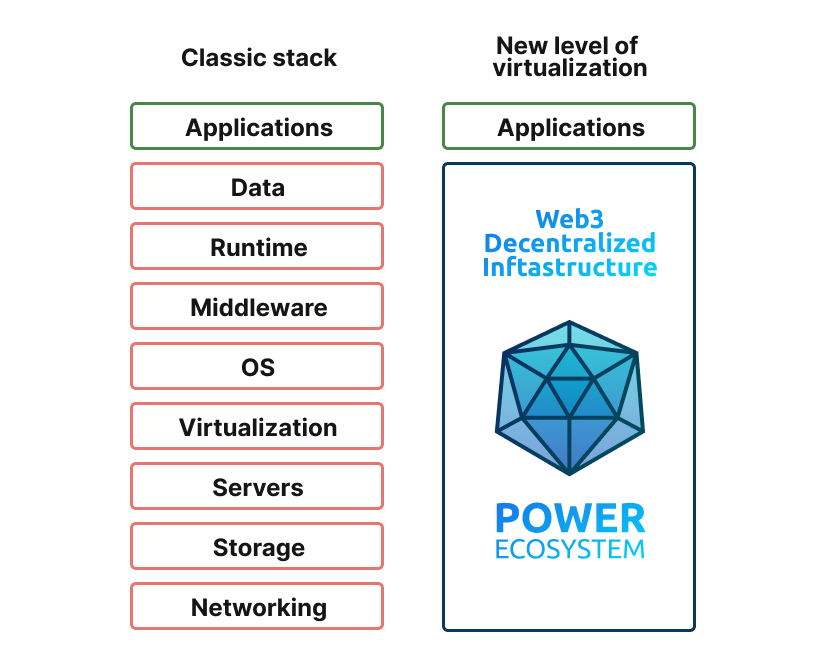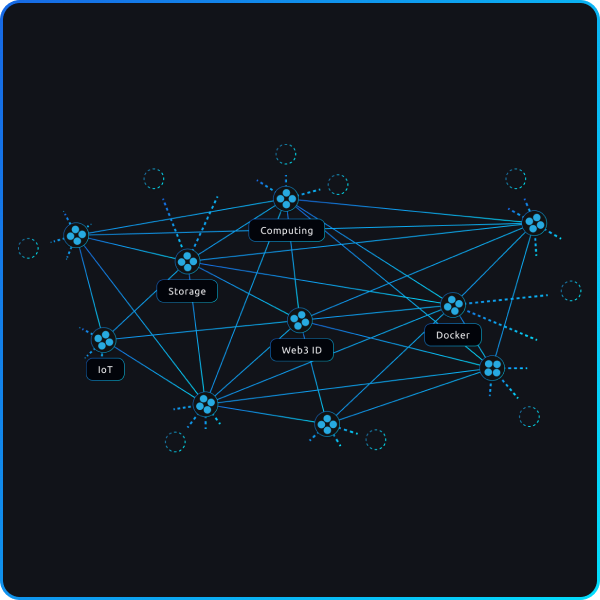When it comes to blockchain technology, things have been growing rapidly in every direction. Chains have been able to support currency but also smart contracts, which opened the game to using the blockchain as a means of services through protocols and bringing in the official era of Web 3.0 in the near future. One of the major challenges of this however is that much of the protocols that blockchain sits on its centralized servers and connections like AWS. If we want blockchain technology to succeed, then an entire infrastructure is needed to take advantage of future potential.
This is where Power Ecosystem comes in and is the NextGen cloud infrastructure for Web 3.0 functionality.
Power Ecosystem: The Web3 Cloud Infrastructure
The Power Ecosystem is a comprehensive and fundamental infrastructure of Web3 Cloud based services hosted on full-sharded network that are enabled by the blockchain and decentralized for Web 3.0 application. This ecosystem is designed to give a complete stack for applications and features for anyone using Web 3.0 just as they would use the current web2.0 application system, without the need for centralized hosting or cloud providers for things like cloud storage, third-party api providers under blockchain networks or middleware. Power Ecosystem is complete, offering decentralized data, storage, runtimes, servers, rest api and networking protocols so that dApps and businesses can create an application layer on top of something secure and distributed. This massively increased security while also keeping costs down because Web3 Cloud is zero-maintenance and based on open community of node providers.

Web 3.0 has been built but the full transition over to a new infrastructure is complex due to the centralized infrastructure that currently exists. Services like Amazon AWS, Creative Cloud, Google and Apple application stores. From websites to applications and to how we even gain information, Web 2.0 can have a firm grasp on all features that make the internet what it is today and that affects cloud based ecosystems as well. Power Ecosystem understands that this needs to change to take advantage of the full power of Web 3.0 cloud services with unlimited scaling.
Benefits of Power Ecosystem
There are numerous benefits in using the Power Ecosystem as an alternative to Web 2.0 functionality. The obvious benefits from using the ecosystem is that you achieve a fully decentralized system that is not prone to failure from a central authority and has the ability to be completely distributed in nature.
In addition to the benefits natural to Web 3.0, Power Ecosystem gives a full stack of features:
- Cloud Infrastructure: The Power Ecosystem is a complete end-to-end system on the cloud, which means that it can be accessed anywhere without the need to have local hosting to support the platform. Power Ecosystem aggregated the computing power of node providers, ISPs, and micro-data centers to help deliver the infrastructure to its user.
- Full Scalability: Power Ecosystem uses sharding to enable full scalability to its users as the ecosystem grows. Nodes within the system cannot influence execution or transactions’ order within a block.
- Decentralized Storage: users will be able to take advantage of traditional cloud storage in the exact same way by having their files encrypted and distributed so that no one person can gain access to your files even if they wanted to.
- Power Nodes: Power Ecosystem has nodes that have a three-function efficient and low cost functionality. The three layers of the nodes enable the system to take full effect on sharing, cross-shard validation, and operate the PowerOS.
- Decentralized Backend: One of the key features that get overlooked on any platform is the fact that backend capabilities are not taken into account. Power has a complete backend system which allows everything to run decentralized.
- Power Ecosystem API: connectivity to the Web 2.0 would be done through a decentralized API that is easy to use and can be set up without deep knowledge of blockchain technology. This API works directly from the data network with auto data validation and has an interface that is easy to use for mass adoption.
- Code Interoperability: Power Ecosystem allows for multiple developer languages to be used, allows for multiple developers types to use the platform which prevents learning a new language or skill.
What Power Ecosystem Wants to Change
For the Power Ecosystem it's not just about creating a new infrastructure for a new technology, it's making things better by offering a full stack of decentralized benefits. Although Web 2.0 has its struggles with centralization, many Web 3.0 offerings to date have been lackluster and immobile. Alternatives like Urbit, Flux, and Dfinity struggle with issues like Multi-VM, full scalability, and interchain security.
Power Ecosystem wants to create an efficient system that lets anyone use Web 3.0 services without the concern for scalability and security. Power has automate state management systems to allow integrity on chain, while creating a decentalized system for task management as well. Oracle integration is fixed via a built-in service and creates a serverless backend for decentralized applications.
Reflection
Power Ecosystem is a complete and comprehensive system that allows for users and developers to make dApps, host sites, and use cloud storage all with the benefits of Web 3.0 in real time. This creates security, scalability, and ownership with the release of the Power token that helps facilitate the utility of the network.
Web 3.0 deserves a real place in the future of technology, and Power Ecosystem is ready to make an impact in its success.






























